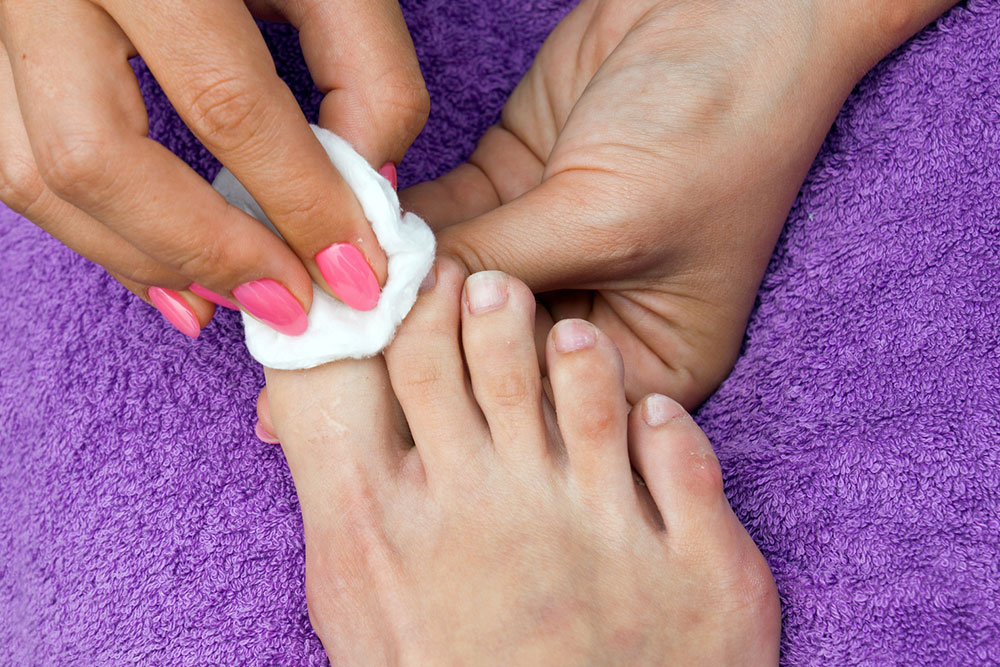Toenail Fungus – Risk Factors and Treatment Options
A toenail infection occurs due to the excess growth of fungi in, under, or on the nail. Fungi that already exist in or on your body can prompt nail infections. Fungi flourish in moist and warm conditions, and hence, this type of environment can trigger them to overpopulate. Fungal infections also spread if you come in contact with someone else who has a fungal infection. These infections develop over time, and there won’t be any immediate difference in the way your nail looks or feels.

What causes toenail fungus infections?
Various fungal organisms lead to toenail fungus infections. Yeast and molds can also cause this problem. The most common condition is triggered by a type of fungus called dermatophyte. Toenail fungal infection starts from athlete’s foot (foot fungus) and spreads from one nail to another. Even though most of the causes of a fungal nail infection are preventable, some risk factors increase the possibility of its recurrence. More men face the problem of toenail fungus than women, and also it is observed in adults more often than in children. You are more likely to get it if any of your family members gets these types of fungal infections. Because of the poor circulation and slow nail growth, older adults are at the highest risk of getting fungal infections. Also, as the nail ages, it becomes brittle, and the resulting cracks let the fungi enter the nail.
The main risk factors for toenail infections are as follows:
- People with diabetes or who have diseases that cause poor circulation are prone to develop toenail fungus.
- People over the age of 65 are more likely to develop a nail infection.
- People who wear artificial nails or wear closed-toe shoes, such as tennis shoes or boots more often can get toenail infection.
- People who have a nail injury, a skin injury around the nail or have a weakened immune system can develop a nail infection.
How can one deal with a toenail infection?
No treatment guarantees to get rid of the fungal infection completely. For some people, the first round of medication might not even work. The fungal nail infection will return in almost half of all cases. Until a new nail that’s free from infection grows in, the nail infection isn’t gone. In severe cases, there may be permanent damage to your nail, and the nail might have to be removed. However, some medications and simple lifestyle alterations can prevent the toenail fungus from spreading.
Medication
Over-the-counter products don’t provide reliable results; therefore, they aren’t usually recommended to treat nail infections. Doctors may suggest oral antifungal medications for the treatment of toenail fungus. Sometimes, antifungal treatments like antifungal nail lacquer or topical solutions can treat the condition. You can apply these onto your nails in the same way that you put nail polish. The number of months that you have to use these depends on the type of fungus causing the infection, as well as the extent of its spread.
Lifestyle changes
Altering your lifestyle can help prevent a toenail fungus infection. The best way to prevent infection is to take good care of your nails by keeping them well trimmed and clean. Also, try to avoid any injuries to the skin around your nails.
Surgery
Surgery is the best option to get rid of a toenail fungus infection. It involves the removal of the nail. However, even this method provides temporary relief. If antifungal medication isn’t used concurrently with the surgery, there could be a recurrence on other toenails.
Home remedies
The most commonly recommended home remedy is vinegar. Even though the effectiveness of these home remedies is highly doubtful, some people apply tea tree oil, coconut oil, essential oils, and oil of cedar leaf (such as Vicks VapoRub) to their nails. These home remedies may cause skin irritation, so use them with care. Thickened nails can be difficult to trim, and one can use topical urea cream to soften the nail.
Practice prevention methods
Wear rubber gloves when you have to wet your hands for an extended amount of time. Using antifungal sprays or powders, dry your feet well after showering, especially between your toes, get pedicures from trustworthy salons, wear socks that minimize moisture, avoid being barefoot in public places, and reduce your use of artificial nails and nail polish to prevent toenail fungal infection.
Other innovative treatment options
- Laser therapy or photodynamic therapy: In this therapy, a medical professional will apply light-activated agents onto the nail and follow it up by shining light of an appropriate wavelength.
- Iontophoresis: In this method, an electrical current is employed to ensure the absorption of topical antifungal medications into the nail.
- Nail lacquer: A lacquer is used to change the micro-climate of the nail to make it inhospitable for the growth of toenail fungus.
Toenail fungus can be very disturbing. Get it treated and alter your lifestyle to prevent it from spreading further. It’s vital to consult your healthcare practitioner if you have diabetes and fungal nail infection.